#13thcentury
Text

In the city of Arroyo de San Servan, in Spanish region of Extremadura, just a few kilometers from Merida, we can see one of the most impressive altarpieces in the area.
Made around 1540/1550, a 13th century woodcarving statue presides over the piece.
1 note
·
View note
Photo

Lakshmi Narasingha #blackstone #orissa #13thcentury #sculpture #motog825gshot (at Prince of Wales Museum Mumbai) https://www.instagram.com/p/CpmTVwmPSzB/?igshid=NGJjMDIxMWI=
0 notes
Photo

The Falkenstein Castle was inhabited from the 13th to the end of the 18th century.🏰 However, after the Thirty Years' War (1618 - 1648) it already lost its importance, fell into disrepair and was only partially habitable.
Not much is left of the castle. The demolition was only stopped in 1842, the entrance gate is a reconstruction dating back to that period. The square bergfried dates from the 14th century with its round turret from the 15th century and is 18 meters high.
The view is very nice, because the small town of Falkenstein looks as idyllic as the intro of a German soap opera from the 80s and 90s.😆📺
A small group of ibexes lived on the mountain until about the 1980s. They were sent from the nearby Opel Zoo in Kronberg.🐏
I didn't stay long there and hiked a bit through the forest.😊
🌸💮🌺🌻🌼🌲🌳
-----------------------------
↪ FOLLOW ↩
🦥 #megagroundsloth
🐾 #megatravelsloth
-----------------------------
#burgfalkenstein #castle #ruins #castleruins #hiking #burgen #bergfried #kronberg #wandern #europeancastles #deutscheburgen #germancastles #nature #kurort #13thcentury #medieval #germany #wandelenindenatuur #latergram #castles #germanhistory #burg #castlesofgermany #naturaleza #natureaddict #naturaleza🍃 #hessen #taunus (hier: Burgruine Falkenstein)
https://www.instagram.com/p/Cnm-w6PtJtU/?igshid=NGJjMDIxMWI=
#megagroundsloth#megatravelsloth#burgfalkenstein#castle#ruins#castleruins#hiking#burgen#bergfried#kronberg#wandern#europeancastles#deutscheburgen#germancastles#nature#kurort#13thcentury#medieval#germany#wandelenindenatuur#latergram#castles#germanhistory#burg#castlesofgermany#naturaleza#natureaddict#naturaleza🍃#hessen#taunus
1 note
·
View note
Photo

Establishing a mythology is bloody demanding work!! Make-up FX by the stunningly talented Mia Giovanna for our upcoming short film, #ThereCameAKnocking #TimeTraveled anything can look like the #13thCentury if you're close up enough. 😂 #ThatFilmLife https://www.instagram.com/p/CiVRNHSL0rb/?igshid=NGJjMDIxMWI=
0 notes
Photo

#Repost @moirataillefer • • • • • • Château royal de Collioure As you may know, I love castles :-) Le château royal de Collioure a été bâti au 13ème siècle sur le site d’un ancien castrum romain, pour accueillir la cour des Rois de Majorque. #chateauroyaldecollioure #royalcastleofcollioure #drapeaucatalan #vacances2021 #13thcentury #occitanietourisme☀️ #myfrenchcastleseries #myworldcastleseries #lampadaire #lampost #Ukrainewillwin https://www.instagram.com/p/ChmKt_7IOQA/?igshid=NGJjMDIxMWI=
#repost#chateauroyaldecollioure#royalcastleofcollioure#drapeaucatalan#vacances2021#13thcentury#occitanietourisme☀️#myfrenchcastleseries#myworldcastleseries#lampadaire#lampost#ukrainewillwin
0 notes
Photo

#Tonbridge #tonbridgecastle #Castle #visitkent #13thcentury #medieval #England #Britain #architecture (at Tonbridge Castle) https://www.instagram.com/p/CfOriwkqBtP/?igshid=NGJjMDIxMWI=
1 note
·
View note
Text

T
he herm of Saint Ladislaus
SACRAL RELICS
The herm means head-reliquary. In this case, it holds Saint Ladislaus King’s sculpture and we definitely can say that it is the most valuable piece of Hungarian metalsmithing.
The head of the herm is made of gilded, embossed silver. The sculpted reliquary was put inside, in a silver case. The work on the shoulder and chest was crafted with the wire enamel technique. This technique is from 14th century of Byzantium which from there spread to other parts of Europe thanks to Venice. And what is the wire enamel?
Artisans put plates on the subject they are decorating and they solder twisted silver wire to make subdivisions. Then they fill the subdivisions with enamel. While the enamel burns out, it shrinks and the twisted silver wire bulks from the surface.
Experts have argued a lot about the makers of the herm. Some think it was made by Márton Kolozsvári and György Kolozsvári and portrait of III. Béla is seen in the herm by that group. Saint Ladislaus was blessed during III. Béla’s reign. The others think that the head part was made around the 12th-13thcentury at Dénes master’s workshop.
We know as following the old traditions his grave was opened and his head and arms were put in separated shrines so they could make them religious relics before he became blessed in 1192. The next time it is mentioned in records was in 1273 that his sculpture was kept in the shrine in the Cathedral of Nagyvárad where Saint Ladislaus was buried. They used it at the vows. According to one of King Zsigmond’s certificates the herm was destroyed in the great fire of 1406 but the relic survived it. This is when the new herm was made with the technique mentioned earlier between 1406 and 1443. We know this because they held the herm under the tower of the cathedral in Nagyvárad. This tower collapsed but the herm did not get damaged at all.
According to legend Saint Ladislaus’ grave was robbed in 1565 but Bishop Demeter Náprági was able to get the shrine back. When he needed to leave Várad because of the persecution of the catholic people, he took the shrine with him to Gyulafehérvár, Bratislava and in 1607 to Győr. Not too long after Bishop Walter Lynch arrived in Győr and brought the Weeping Madonna painting that wept blood.
Bishop Demeter restored it in Prague. This is when the roller neck and the neck ring got on it that we can see today and this is when its gothic crown was changed. The crown is decorated with Czech grenades and glass and uncolored quartz insets.
Knight King’s personality cult was not foreign for the citizens of Győr before the arrival of Demeter Náprági. Győr town looks at the Saint King as its personal patron since that moment that Győr gave home to this national relic. The story of the earthquake in 1763 belongs to it also. Thanks to that Győr has a tradition since then and the town got a new legend that you can read about here.
They opened the herm for 4 days in 2011. The scientists (doctors, anthropologists and boffins) started a research project to get answers for the following questions during this 4 days: is there a sculpt relic in the herm? Is it a full sculpt or just pieces of it? And does this relic really belong to the Knight King?
The lower jaw and most of his teeth were missing and also little pieces of his sculpture, likely because others took small parts of this relic before as well. János Simon bishop of Győr who became diocesan bishop of Esztergom in 1867 took a tooth of Saint Ladislaus that is kept in a shrine in the Basilica of Esztergom. The shrine was made in Vienna. A little piece of the sculpt and one of the remaining 3 teeth were taken to do some research. The first fact that was figured out that Saint Ladislaus was totally healthy when he died.
The anthropology examination made sure that the herm holds the sculpture of Saint Ladislaus. We can see the colored part on the top of the sculpt and that matches the openings of the shrine that is a strong proof that the original sculpt was kept in it for centuries. Also it shows that it is Saint Ladislaus’ sculpt that it has rugged features of a man who was between 45-55 years old that is shown on the face reconstruction. This face reconstruction is very similar to the one that was made by the sculpt of the III. Béla.
See insights and ads
Boost post
All reactions:
6You, Hungarian Tourism Guide and 4 others
6 notes
·
View notes
Text
��Connecticut collector discovers 800-year-old musical transcripts hidden in books
Story by Jane Caffrey
ARidgefield man is collaborating with a team of academics to learn more about history and music after discovering Medieval musical manuscripts that are 800 years old.
Hundreds of books surround Nicholas Alexander in his Ridgefield home.
“It's just nice to have them as old friends,” Alexander said.
Many, found on hidden shelves in secondhand bookstores, are centuries old. A restoration project of some 18th century French books in Alexander’s collection sent him to a bookstore in Boston this past summer.
“They had some nice leather books that were on sale for not very much,” he said.
As he took them apart to reuse the covers, Alexander made an unexpected discovery.
“I found what looks like music, but very strange music, peeking out from the back of the books,” he said.
Alexander had inadvertently discovered the French Medieval music manuscripts.
“When the United States was founded, these fragments were already in the books, they'd already had half a millennium of religious history happen,” Alexander said.
Five hundred years after these manuscripts were created, they became nothing more than scrap, used in the bindings of French books in the 1700s.
“For a user of the book you’d never know that the fragments were in here, they'd have been completely hidden,” Alexander said.
After making the discovery, Alexander was quick to obtain the remaining 23 volumes of the set that were available. He then spent hours matching up pieces in the trove of Medieval material.
“This was a great big jigsaw puzzle,” he said.
A puzzle he is not solving alone, now teaming up with an academic team in Canada.
“I can sort of solve, kind of like a crossword puzzle,” Dr. Anna de Bakker, musicology postdoctoral research associate and researcher at McGill University, said.
Dr. de Bakker is an expert in European chant music. She is transcribing the Latin text and musical notes, as Alexander matches up pieces from his collection for upload to a digital database.
The expert opinion: the fragments would have been part of a book used in a 13thcentury Catholic monastery in northern France or Belgium by a Cistercian order of monks. Dr. de Bakker said finding musical manuscripts that date back to the 1200s is extremely rare.
Yet even as the pages reveal insight into the past, they present mysteries.
“We don't know exactly which monastery this came from, but we have an interesting clue because we know which books they got bound in,” Dr. de Bakker said. “It’s around the 18th century that this particular monastery decided they didn't need this book anymore. For example, it might tell us it was a monastery affected by the French Revolution.”
The scraps of history open a window into the Medieval monastic world.
“For 500 years, this music was used probably every day. It was sung as a chant music by the monks in the abbey,” Alexander said.
The pieces also reveal the evolution of music through the centuries.
“We haven't fully worked out what it all means. We don't know fully how all the notes would have sounded if they’re sung,” Alexander said.
Alexander’s next goal is to get the manuscripts permanently displayed in a museum, hoping to share fragments of history with posterity.
“Something incredibly special, just by luck or by fate, or by act of God, had been placed into my hands, in my custodianship, and it just made me feel very humbled,” Alexander said. “It just creates a new perspective on what time really means.”
Anyone interested in discussing an exhibition of the manuscripts with Alexander should email him at [email protected] “
3 notes
·
View notes
Text
Château de Loche

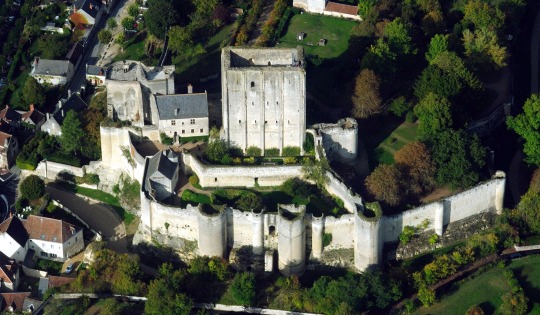
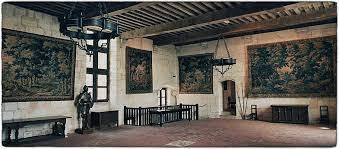

Château de Loche is located in the department of Indre-et-Loire in the town of Loches, France. The mammoth square keep was built in the 11th century by Foulques III Nerra, Count of Anjou, to protect and defend the weak side of a 9thcentury fortress. The keep was besieged several times throughout history. Additions to the complex and further fortifications were added nearly every century, including a curtain wall in the 12th century, the towers in the 13thcentury, the governor’s house in the 14th century, and another tower and caponeirs in the 15th and 16th centuries. The chateau served as a royal fortress at one point and became a prison in the 15th century. It was under King Charles VIII and Louis XII that the residence was expanded. In the 18th century, it was used as a prison for revolutionaries and as a court of law, and then as a civil court until the 1920s. Restoration work began in 1806 to repair damage due to ransacking during the French Revolution, but parts of the castle remain in ruins. The council of Indre-et-Loire owns the castle. In 1985, the chateau was converted into a museum. The museum holds a collection of medieval armor. Château de Loche is a historical monument and is open to the public.
#Château de Loche#chateaux#CASTLES#france#Department Indre et Loire#Loches#museum#Royal City of Loches
1 note
·
View note
Text
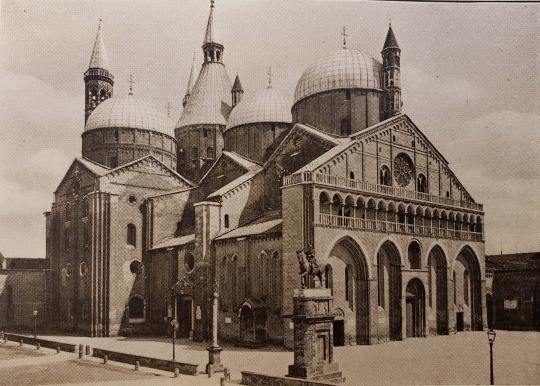
From: Bumpus, T. Francis (Thomas Francis), 1861-1916. The cathedrals and churches of northern Italy. Boston : L.C. Page and Company, 1908
NA5611 .B8
#basilica#shrine#church#padua#italy#stanthony#saintanthony#13thcentury#romanesque#byzantine#gothic#vintagebooks#libraryofva
49 notes
·
View notes
Photo

For a client I was asked to illustrate this 13th century knight! Was fun to research all the armor and gear to paint it all as historically correct as possible, I learned a lot about crossbows!
#knight#13thcentury#medievalart#historicillustration#historicart#digitalart#characterdesign#visualdevelopment#illustratie#historyart#crossbow#historical illustration#medieval art#Character Design#13th century#digital painting
3 notes
·
View notes
Photo

San Michele in Foro, Lucca, Italy (July 2016)
8 notes
·
View notes
Photo
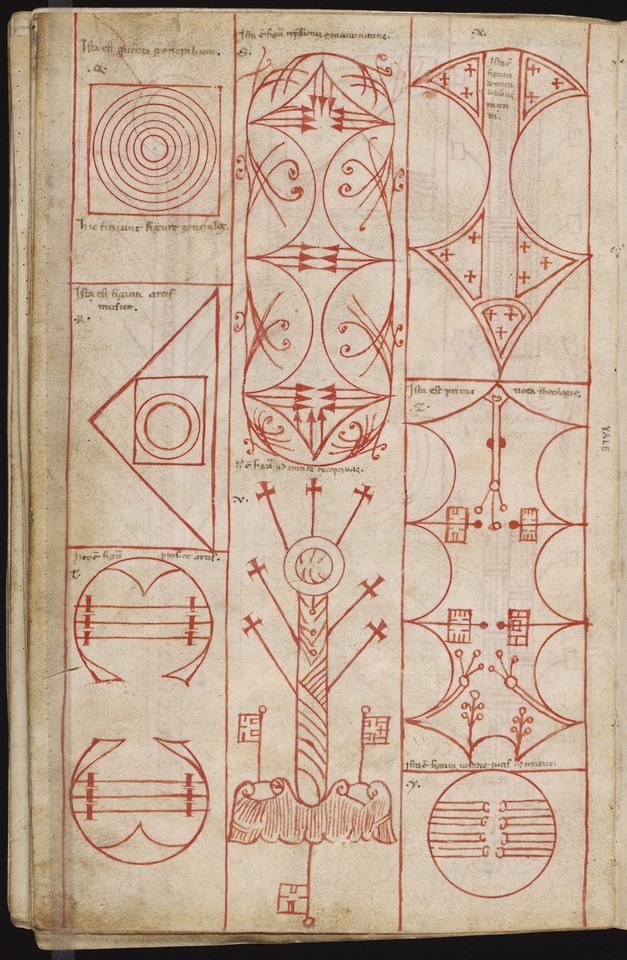
Ars notoria, sive Flores aurei, c.1225, Mellon MS 1, Beinecke Rare Book & Manuscript Library, Yale University.
65 notes
·
View notes
Photo

Today we welcomed three sections of the Introduction to New Testament class to see a large selection of bibles from special collections. From a 13th century Greek lectionary to 21st century biblezines there was plenty for students to dig into!
https://www.instagram.com/p/B788dYVJ_mp/?igshid=xobjebipi177
#specialcollections#13thcentury#21stcentury#bibles#biblesgalore#rarebooks#bindings#classvisits#hds#ahtl
10 notes
·
View notes
Photo

Tempat Tidur Kanopi 🛌
Tempat tidur kanopi adalah jenis tempat tidur yang mempunyai empat tiang yang menjulang dari setiap sudut tempat tidur. Tingi tiangnya sekitar 150 cm atau lebih dan terhubung di bagian atas agar tetap stabil.
1. Sejarah singkat 🏰
Tempat tidur kanopi dengan tirai digunakan oleh para bangsawan di Eropa sejak abad ke 13 untuk kehangatan dan privasi, karena seringkali pelayan mereka tidur di kamar yang sama dengan mereka.
2. Evolusi ⏳
Tempat tidur kanopi yang umum dijumpai masa kini adalah tradisional dan kontemporer.
Sebagian besar tempat tidur kanopi tradisional berbingkai logam atau kayu dengan banyak ukiran.
Di sisi lain, tempat tidur kanopi kontemporer umumnya menggunakan desain yang lebih sederhana. Kayu, logam, atau kombinasi dari kedua bahan tersebut sering digunakan.
3. Kelebihan dan kekurangan 🤔
Tempat tidur ini dapat menjaga kehangatan, menghalangi cahaya dan kebisingan, dan menawarkan lebih banyak privasi, dan perlindungan dari serangga.
Namun, tempat tidur kanopi membutuhkan perawatan ekstra - tiang dan tirai rentan berdebu. Selain itu, tempat tidur ini tidak cocok untuk ruang sempit seperti kamar tidur kecil di apartemen kecil.
4. Kasur Mimpi ☁️
Karena kasur kami memiliki berbagai ukuran, anda dapat memilihnya tergantung pada ukuran kanopi anda! Kami sangat yakin bahwa kasur Mimpi dan kanopi akan membuat kombinasi yang sempurna untuk kamar tidur anda.
Saat ini kami memiliki promo Ramadhan: diskon hingga 30% dan bantal GRATIS.
#canopybed#canopy#canopybeds#bedroom#medieval#13thcentury#mattress#mimpisleep#kasurmimpi#kasuronline#kasurkanopi#kanopi#indonesian#indonesia#kamartidur#kamar tidur#kamar#decoration
1 note
·
View note
Photo
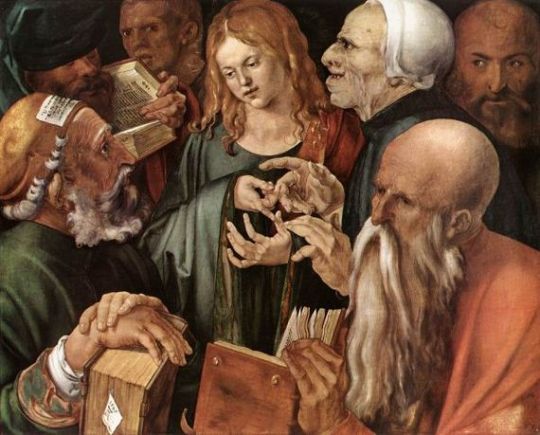
Imagine this, you are a Jew from the 14th century and you are working to keep your family fed. As you walk home you get rocks hurled at you, threats from Christian people saying they will take your life and your families, all because you follow a different religion than they do but you cannot say anything back since there is a risk that it will cost you your life. Morally, who is in the wrong here? A Christian during this period would more than likely say the Jewish person is in the wrong with reasoning based solely on their religion. During the 13th century, anti-semitic ideologies like that were prominent with the presence being supported by pieces such as The Siege of Jerusalem with Jews being potrayed as immoral people while also describing them to have unsightly features such as, “A severe sickness at the center of his face: The lips lay in a clump, clotted on the cheek Like an unclean tumor, clutched together”(Siege 30-32). The use of describing Jews with ugly features is used to hint to an immoral or corrupt sense of morale to ultimately separate the Jews from Christians and put Christians in a higher class than Jews. In the following blog posts, I will be diving into how physical appearance is used in The Siege of Jerusalem and be working with scholar's works to describe how it is used to create a sense of class between the Jews and Christians. I will argue that morality is not connected to physical appearance and that physical features are instead used as a tool to push a different agenda.
edited
#AntiSemitism#13thCentury#12thCentury#11thCentury#Morality#Ugliness#Disgusting#Stereotypes#SiegeofJerusalem
1 note
·
View note